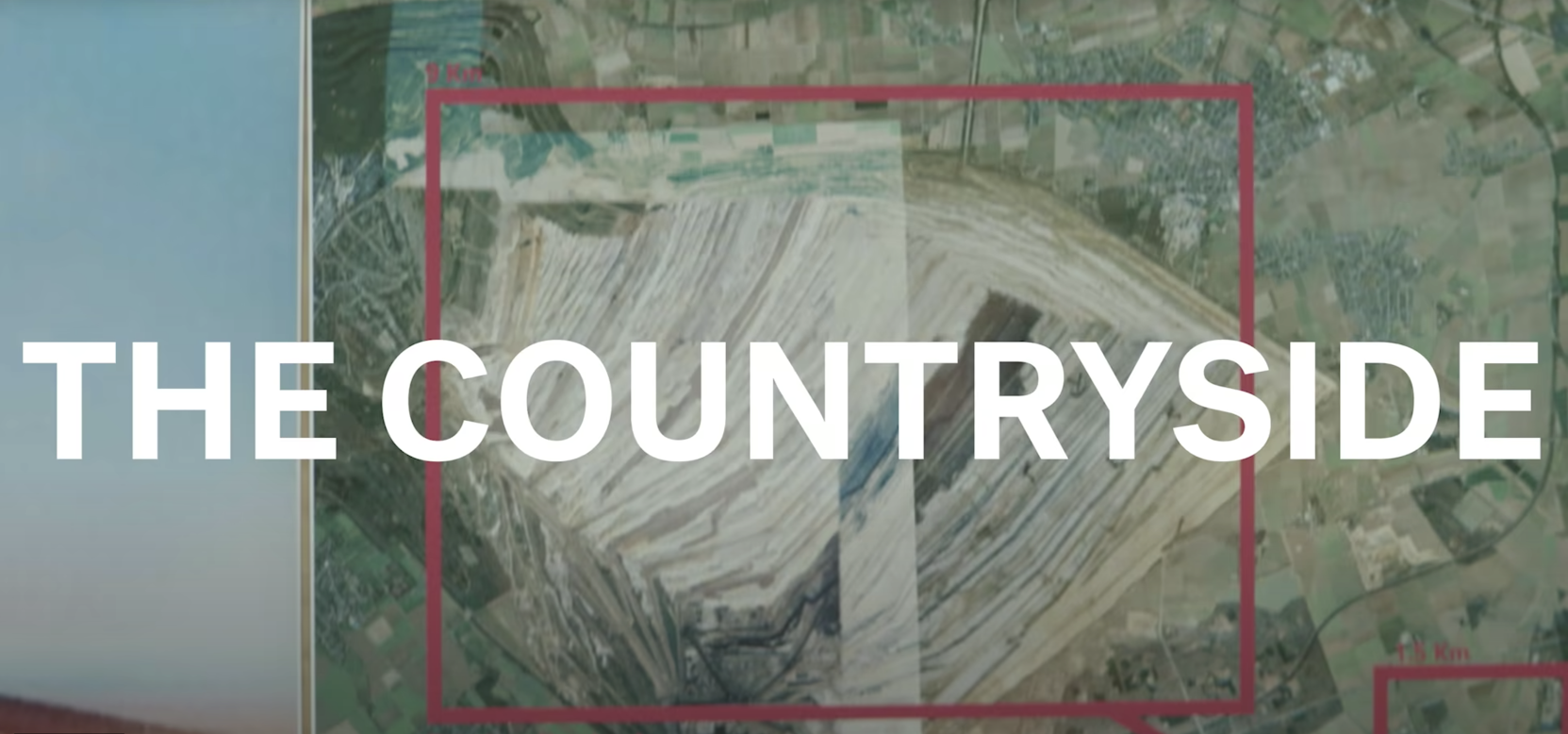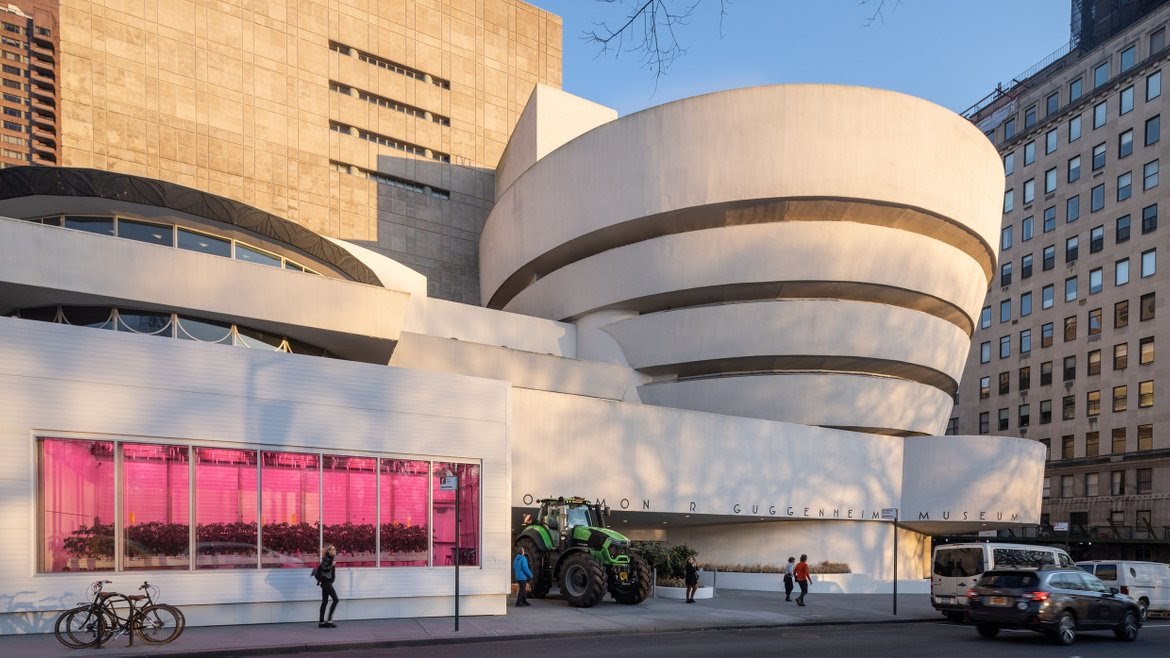 (Still from “Countryside, The Future at the Guggenheim” introductory video)
(Still from “Countryside, The Future at the Guggenheim” introductory video)
Olivia Ann Carye Hallstein
Countryside, The Future at the Guggenheim Museum (dates to be announced) could not be more relevant to a suddenly localized population experiencing new ways of interacting and work-life environments without being bound to urbanity. In this age of a digital shift toward more remote interactions, people are moving from cities to the countryside seeking refuge, isolation and expansiveness. According to a recent Washington Post article titled “The Pandemic is Making People Reconsider City Living…” by Heather Kelly, some real estate agents have experienced an increase of 300% in inquiries related to suburban and countryside areas. According to this exhibition, only 2% of the world is made of occupied cities and the countryside is defined as a space of cultivation. With increased dependence on the countryside for agriculture and resource support, perhaps the prospect of country cultivation is exactly where societies need to focus. Though perhaps this is simply part of the ideology of the countryside as holistic and regenerative that the exhibition explores in its semiotics stalls.
 Rem Koolhaas is described by Sarah Whiting as a maker who chooses a topic that is right in front of you that you do not realize and shows how important it is. (Still from “Countryside, The Future at the Guggenheim” introductory video)
Rem Koolhaas is described by Sarah Whiting as a maker who chooses a topic that is right in front of you that you do not realize and shows how important it is. (Still from “Countryside, The Future at the Guggenheim” introductory video)
And, it's exactly this paradox that puts Rem Koolhaas alongside the AMO and Harvard Graduate School of Design (GSD) at the forefront of a pertinent topic in The Countryside. With the intention of having an information-based, almost documentary variety of a show, Koolhaas proudly states “This is not an art exhibition.” And, how true to life that is; Countryside, The Future does not create a reflection of reality or an unanticipated visual critique for the purposes of activation, instead it takes an almost journalistic approach in describing an already existing place and dependency paradigm that's been given very little attention by artists and planners alike. Furthermore, the “Future” is now, where, as a result of the current circumstances the world shares, the countryside is proving particularly important.
Though I was unable to visit the exhibition in person, and the Guggenheim has been closed to visitors since the beginning of the pandemic in March, just one month after its opening, I spent considerable time with the website coverage behind closed doors. Exhibition design in the digital age allows for a limited, but vibrant exchange of information. Countryside, The Future includes a combination of video shorts, audio guide podcasts, and Photoshop overviews to represent in-person content on their website.

(Installation View, Countryside, The Future, Solomon R. Guggenheim Museum, New York, February 20- August 14, 2020. Photo: David Heald)
Experiencing an exhibition conveniently from home, has its advantages and disadvantages. Seeing an exhibition live allows for total immersion, to explore a space in depth, and to experience three dimensional presentation of images and information. Instead, when presented with an audio guide podcast as a replacement—for someone who prefers a multi-sensory experience, especially at a museum with such an awe striking exhibition space—much is left to the imagination. That said, the online experience is at least better than a book.
 (Installation View, Countryside, The Future, Solomon R. Guggenheim Museum, New York, February 20- August 14, 2020. Photo: David Heald)
(Installation View, Countryside, The Future, Solomon R. Guggenheim Museum, New York, February 20- August 14, 2020. Photo: David Heald)
Perhaps some "visitors" can look at pixelated images on a computer screen and be transported in their minds eye to a street full of noise and raucous smells, in a city that leads to such a unique building as the Guggenheim. One can imagine even further that at the entryway they are met with the transporting aura of tranquility, the open spiraled hall and clerestory lighting. As they do with many of their exhibitions, the Guggenheim chose to place text, in this case a poem by Rem Koolhaas, on the unusually low architectural railing where one might look to counter the intensity of scientific insights encircling them. A curious online viewer might speculate how such an informational, content driven art exhibition with insights on rural living, could be engaged in three dimensions. As one listens to the audio track full of incredible interviews from the Office for Metropolitan Architecture, AMO and colleagues from the GSD, one can sit at their computer and fill the gaps with memories of prior museum visits.
 (Installation View, Countryside, The Future, Solomon R. Guggenheim Museum, New York, February 20- August 14, 2020. Photo: David Heald)
(Installation View, Countryside, The Future, Solomon R. Guggenheim Museum, New York, February 20- August 14, 2020. Photo: David Heald)
Though undeniably revolutionary as an exhibition itself, this show stays behind closed doors without much empathy for the viewer who would like to truly experience it. There are several videos to rent through the website, including one free one by The Institute of Queer Ecology. Metamorphosis is full of magic and prospective theories related to a queer future dictated by nature and renewable energy, and is available to the public one part at a time, without the possibility of watching it in its entirety.
 Still from “Metamorphosis” by The Office of Queer Ecology (https://dis.art/)
Still from “Metamorphosis” by The Office of Queer Ecology (https://dis.art/)
Similar to the statements made in Metamorphosis, regarding the need for new methodologies, it's important that institutions like the Guggenheim innovate and adapt to the growing digital era. From the perspective of a current-day, quarantined viewer, the open-source movement is having a heyday and rightfully so. Now, that the internet is an exclusive portal into the cultural and international world, the viewer is dependent on resources with open access to all information. Unfortunately, the Guggenheim seems to be taking the opposite approach, choosing exclusivity, to the point of being occult and unavailable to the public that supports it.
Still, the topic itself and the intention of Koolhaas is to elaborate on a very important and much overlooked strategy. Perhaps the Guggenheim, though withholding so much of its exhibition, can inspire the interested to discover the countryside themselves. The natural world is calling us towards its incredible ecosystems and its perseverance in the face of the pandemic. The countryside, as a cultivated landscape, reminds us more than ever of the beautiful symbiotic relationship humans share with other animals and plants. Perhaps Countryside, The Future is a summons for us to show respect and to become more aware of that cohesion; to remind us to look forward, beyond the city limits, into the vast and varied spaces within our reach.
 Still from “Metamorphosis” by The Office of Queer Ecology.
Still from “Metamorphosis” by The Office of Queer Ecology.